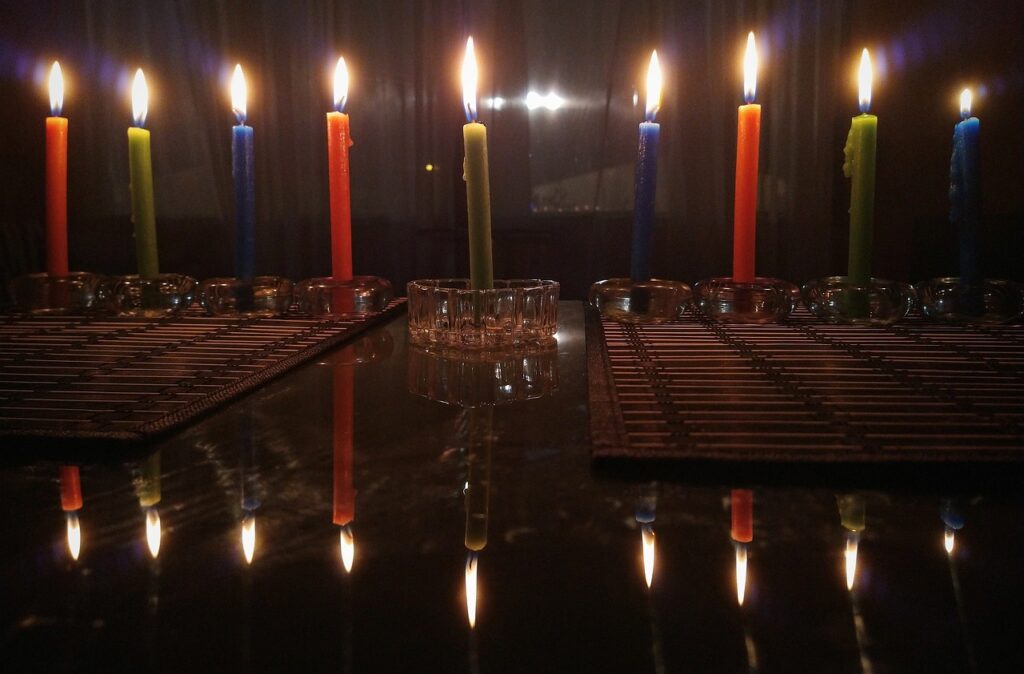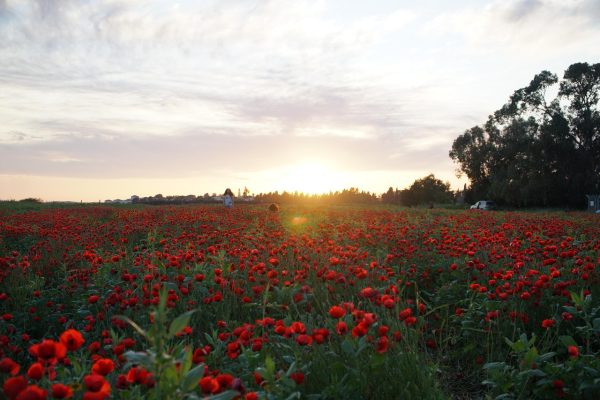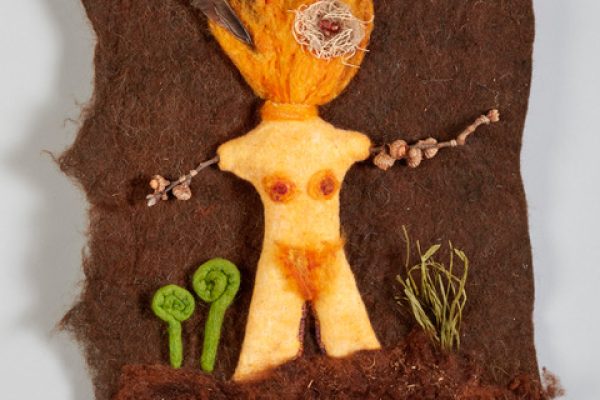Fast Facts
Kislev is the ninth of the twelve months of the Jewish calendar.
Kislev comes at the same time as the secular months of November/December. This is a cold and dark time of year. Nature rests, and winter is upon us.
The mazal (constellation) for Kislev is Sagittarius, the keshet (arching bow).
The arching bow reminds us of the rainbow and of our responsibility to be guardians of the earth. In Genesis 9:12–17, God places a rainbow in the sky as a covenantal sign, indicating a promise never to destroy the earth again. (The blessing for seeing a rainbow: “We bless you, Eternal our God, who remembers the covenant and keeps faith with the covenant, forever according to your word.”) The bow of Kislev reminds us of the bows of the Maccabees who fought against the Selucids in the story of Hanukkah.
Features
Hanukkah begins on the 25th of Kislev and ends in Tevet. This is the only Jewish holiday that spans two Jewish months!
Hanukkah History
During the second century BCE, the Jews, led by the Maccabees, fought against Antiochus and his Selucid (Greek/Syrian) army. Antiochus had a policy of stifling Jewish religious life, including banning Shabbat observance and circumcision. Eventually, the Jews were victorious and reclaimed their religious life. To purify the Temple, which the Selucids had defiled, the Jews needed oil to rekindle the eternal flame. The story is told that they found only enough oil to last one day, but a miracle occurred, and the oil lasted for eight days. Thus, the Temple was rededicated. Hanukkah means dedication.
Hanukkah is the only important festival in the Jewish calendar not mentioned anywhere in the Tanakh (Hebrew Bible). The story is recorded in the ancient Books of the Maccabees.
Hanukkah Activities
Lighting the hanukkiyah: (the special eight-flame menorah, with a ninth shamash or servant flame)
Telling the story of Judith: Among the Sephardim (Jews from the East), women traditionally gather on the seventh night to tell Judith’s story (found in the apocryphal Book of Judith ) and to eat cheese dishes, sing and dance, and receive special blessings. Some Ashkenazim (Jews from the West) used to tell the story of Judith on the eighth night of Hanukkah, in Yiddish.
Giving gifts to daughters: Some Sephardim call the end of Hanukkah the “New Moon of the Daughters” when parents give special presents to their daughters.
Playing dreidel: Dreidel is a classic Hanukkah gambling game. The letters on the dreidel—nun, gimmel, hay, shin—stand for a Hebrew sentence that translates to mean, “A great miracle happened there.” Some say that the origins of the game are German, and that the letters correspond to the directions for playing the game: nichts (“nothing”); ganz (take “all”); halb (take “half”), and stell ein (“put one in”).
Eating chocolate Hanukkah gelt (coins).
FABULOUS FEMALES
Hannah
The Second Book of the Maccabees records cases of pious Jews who chose to die rather than submit to the Syrians. A celebrated mother (she is referred to in Talmud as Miriam, but the first-century historian Josephus identifies her as Hannah), Hannah expressed unfaltering faith in God as she was forced to watch her seven sons die for refusing to bow to an idol, and then she killed herself.
Hannah’s martyrdom raises the issue of supreme sacrifice for religion. We might ask ourselves where we would draw that line today. Hannah also calls upon us to hold in our hearts those mothers in every generation who must give up their children to war. We are reminded in particular about mothers in Israel today.
The Four “Women of Light”1
According to legend…
Sarah Imeynu (our foremother) lit candles at the beginning of Shabbat. Miraculously, the flame burned throughout the entire week, lighting the tents of Abraham and Isaac.
Rebecca Imeynu (our foremother) inherited the task of lighting these candles when Sarah died. Because Rebecca was also a righteous woman, her candle light shined throughout the entire week as Sarah’s had.
Queen Esther was known as the Ayelet HaShachar (the morning star) who brought a bright, rekindled spirit to the Jews after the dark night of suffering at the time of King Ahashuaros.
Deborah was a wise and important Judge who lived in the twelfth century BCE. In the Torah Deborah is referred to as the “Woman of Lapidot.” In Hebrew, lapid means torch or flame, and so the Talmud refers to Deborah as a “woman of flames.” A contemporary midrash teaches that Deborah made candle-wicks which lit before fire ever touched them; the candles were illuminated from the light inside of Deborah, which grew as she grew.2
The Four “Women of Light” remind us that each one of us can share her light without diminishing it. They also invite us to remember the female ancestors in our own families every time we light the Shabbat and Hanukkah candles.
FOODS
Salty foods, especially salty cheeses, are traditional because legend has it that Judith fed the enemy general Holofernes salty foods to make him thirsty for wine. As he lay in a drunken stupor she was able to slay him, thus saving Jerusalem from siege.
Because of the miracle of the oil, oily foods are also traditional, including latkes and jelly doughnuts, which are a Hanukkah favorite in Israel.
————————-
1 . Our discussion of “The Four Women of Light” is adapted from Penina Adelman, Miriam’s Well: Rituals for Jewish Women Around the Year, p. 37.
2 . This wonderful contemporary midrash was written by Janet Zimmerman-Kahan and is recounted in full in Penina Adelman’s Miriam’s Well, pp. 37-39.
This “Essence” is taken from the Sourcebook for Leaders, written by Rabbi Rachel Gartner and Barbara Berley Melits, for Rosh Hodesh: It’s a Girl Thing! This experiential program was created by Kolot: The Center for Jewish Women’s and Gender Studies to strengthen the Jewish identity and self-esteem of adolescent girls through monthly celebrations of the New Moon festival. The program is now available through Moving Traditions.












